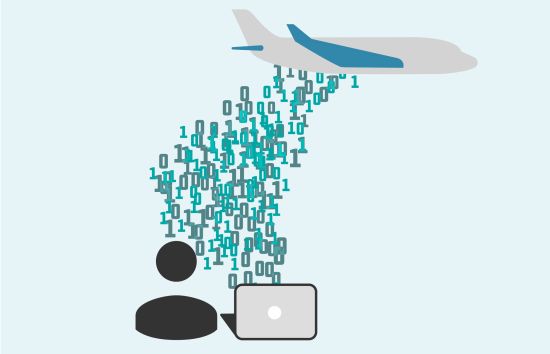
Aviation Couple of the Moment: Safety and Data Science as FDM
Enrique Diaz
Humanity fulfilled the dream of lifting up from the ground more than a hundred years ago. Throughout the first century, after the Wright Brothers, paramount milestones were achieved to ensure the viability and safety of aviation in general and, in particular, of air transport. State-of-the-art reflects how technological advances and aerospace knowhow have evolved towards the promise of smoothness and security for all air transport users. Nonetheless, compliance with the imposed requirements for air transport must be ensured at all costs.
Conventionally, aviation history can be divided into three periods. These are the so-called technical, human factors and organizational eras. As the first two relate to the evolution of avionics and individual behavior, respectively, the last is the one that prevails today. Safety is definitely understood from an organizational point of view. What is the main characteristic of this period? The clear answer is the new approach to safety improvement as based on routine collection and analysis of data. Specifically, proactive and reactive methodologies are imposed to monitor known safety risks and to detect emerging safety issues. This is where data recording and management come in. At this point, readers may be encouraged to take a look at the posts on FDM and FMS here.
These methods consist, partly, on the implementation of FDM, which is fed by the FMS. In plain words, the Flight Management System is in charge of retrieving all relevant data from the different aircraft systems. The Central Air Data Acquisition Unit, the Global Positioning System and the Inertial Measuring Unit are its main sources. After developing the FMS central computer, current methodologies aim to analyze and inspect these data sets that comprise all parameters related to aircraft operation. Data Mining techniques lead the way in these research topics. On that note, how is it possible to merge all data and record it in a way that can be analyzed? The answer lies in the implementation of data frames technology and the on-board Quick Access Recorder.
The latter is the system in charge of retrieving information from the different lines in the aircraft. Data frames allow merging of data into well-defined binary structures. When the statistical analysis takes place, data is decoded from its binary form into engineering values such as velocity, revolutions per minute, etc. This depends on each parameter. Furthermore, the decoding process is detailed in the Data Frame Layout Documents, which are the result of setting regulations regarding parameter recording resolution, range and precision.
By means of both the data downloaded from the Quick Access Recorder and the decoding process, FDM programs can represent a paramount source of knowledge. Mainly, data can be particularized from assumed to actual parameters. For instance, this fact allows end-users to prove compliance with regulations of noise and rates of ascent and descent. Conversely, it also permits regulators to enforce remedial actions if conflicting data are discovered, with respect to usual cases, in safety incidents.
FDM constitutes a major source of safety improvements and we will promote its huge expansion and evolution throughout the upcoming few years. Data Analytics and Data Mining research will possibly enter the aviation industry right at the post-operational phase as tools to ensure the optimal use of recorded data.


